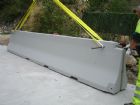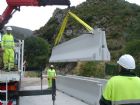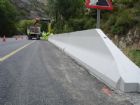Permanent concrete barriers with the CE marking new
The standard UNE EN 1317-5 on permanent concrete barriers requires the CE marking on all types of vehicle containment systems installed either as replacements or on new sites.
The CE marking must be made under system 1, whereby the manufacturer of the concrete barriers must be certified by an external company that verifies and guarantees compliance with the requirements indicated in the reference standard. Through the CE marking, the manufacturers certify that they comply with the provisions of the new standard UNE EN 1317-5 and the essential requirements of the European Directive. Therefore, the CE marking of the vehicle containment systems is a mandatory requirement for their sale inside the European Economic Area.
Failure to comply with this requirement can have criminal repercussions for the people responsible for the works.
With the objective of reducing the social impact generated by traffic accidents and to achieve greater traffic safety, PREFABRICADOS ALBERDI, S.A. will develop new vehicle containment systems using reinforced concrete elements such as barriers and parapets for installation on roads, viaducts, railways and streets, among other applications. These elements must satisfy the usual needs of any road solution, which necessitates designs including single and double lines of barriers for larger roads, parapets for overpasses such as bridges or even lateral barriers for tunnels, all with containment levels H1, H2, H3 and H4b.
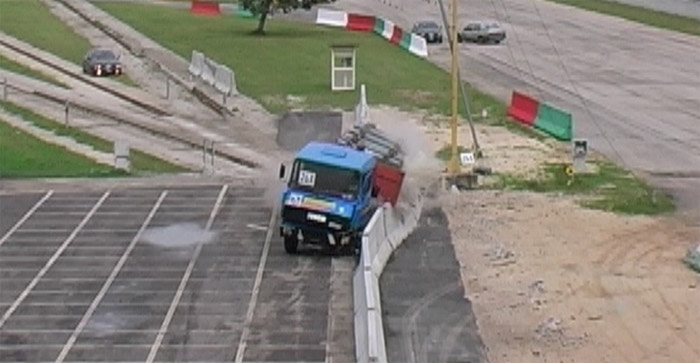
The different concepts and specifications of the new standard required for vehicle containment systems (VCS) aim to define and characterise the behaviour of a containment system in the event of a particular impact from the following points of view:
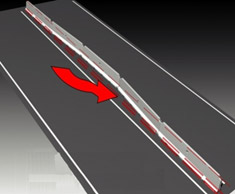 The impassability. High degree of containment in the event of impact (CONTAINMENT LEVELS H1, H2, H3 and H4b) preventing the vehicle invading the opposite lane and the controlled stopping of the vehicle minimising injury of the occupants.
The impassability. High degree of containment in the event of impact (CONTAINMENT LEVELS H1, H2, H3 and H4b) preventing the vehicle invading the opposite lane and the controlled stopping of the vehicle minimising injury of the occupants.
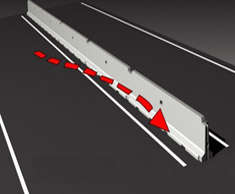 The Redirecting the vehicle to the road, maintaining the integrity of the containment system after the collision and making it impossible for the vehicles to overturn in the event of impact.
The Redirecting the vehicle to the road, maintaining the integrity of the containment system after the collision and making it impossible for the vehicles to overturn in the event of impact.
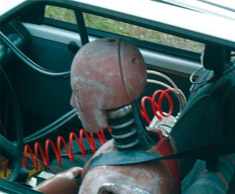 Severity of impact. Behaviour of the VCS from the point of view of possible injury to the occupants. Reduction of the impact energy and elimination of the “whiplash” effect for the individuals on board.
Severity of impact. Behaviour of the VCS from the point of view of possible injury to the occupants. Reduction of the impact energy and elimination of the “whiplash” effect for the individuals on board.
Considerations:
This group of regulations is not specific for concrete barriers, referring to any vehicle containment system, therefore barriers and parapets made of metal, wood, concrete or any other current or future material are included.
The CE marking is obligatory as of 1 January 2011, and is regulated in standard UNE-EN 1317-5 and supplementary regulations. In Spain the standard UNE-135900- 1 and 2 on the protection of motorists is also in effect.
All the previous standards are revoked: 0.C., N.S. and explicitly the C.D. 321/95 TyP and the N.S. 1/95 SCG since the obligatory framework entered into effect.
Vehicle containment systems without CE marking cannot be sold as of 1-01-2011.
Real crash tests are required for every model and level of containment.
Contact us to request a quote.
Photo gallery: permanent concrete barriers with the CE marking

We use our own and third party cookies, for the analysis of user navigation. If you continue browsing, we consider that you accept the use.
You can change the settings or get more information here.

Arriandi auzoa, 1
48215 Iurreta - Biscaye (Espagne)
Tél. : +34 94... voir téléphone
Fax : +34 94... voir fax
Prefabricados Alberdi - Copyright 2012 | Avertissement légal | Protection des données | Plan du site | Cookies

Site web conçu par 
et développé par DMacroweb



